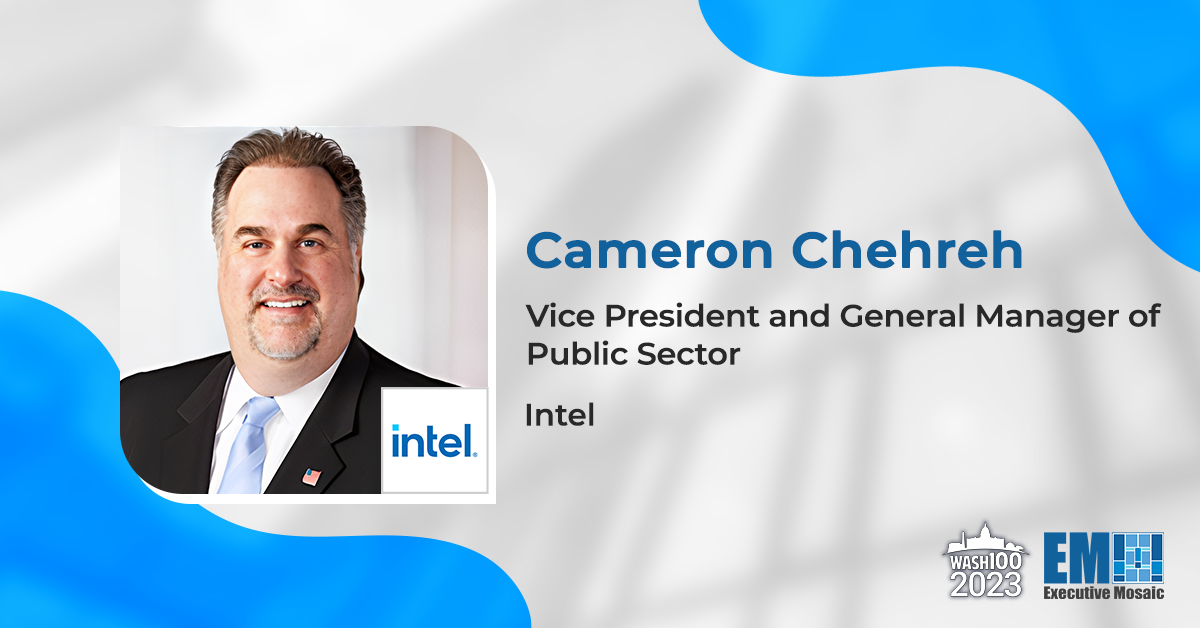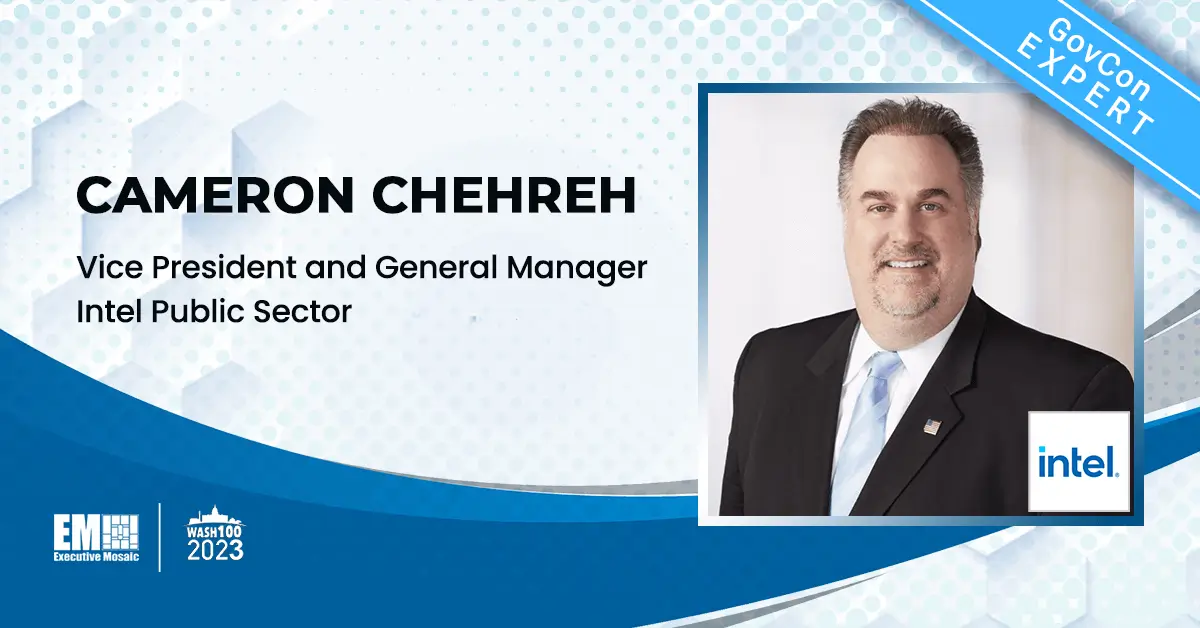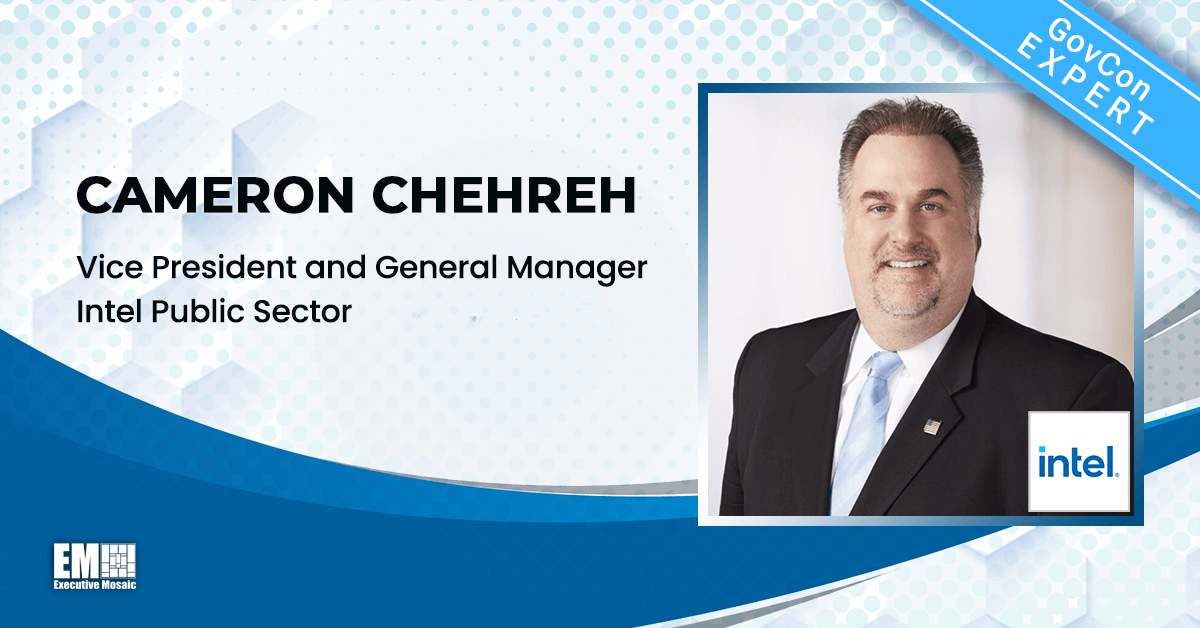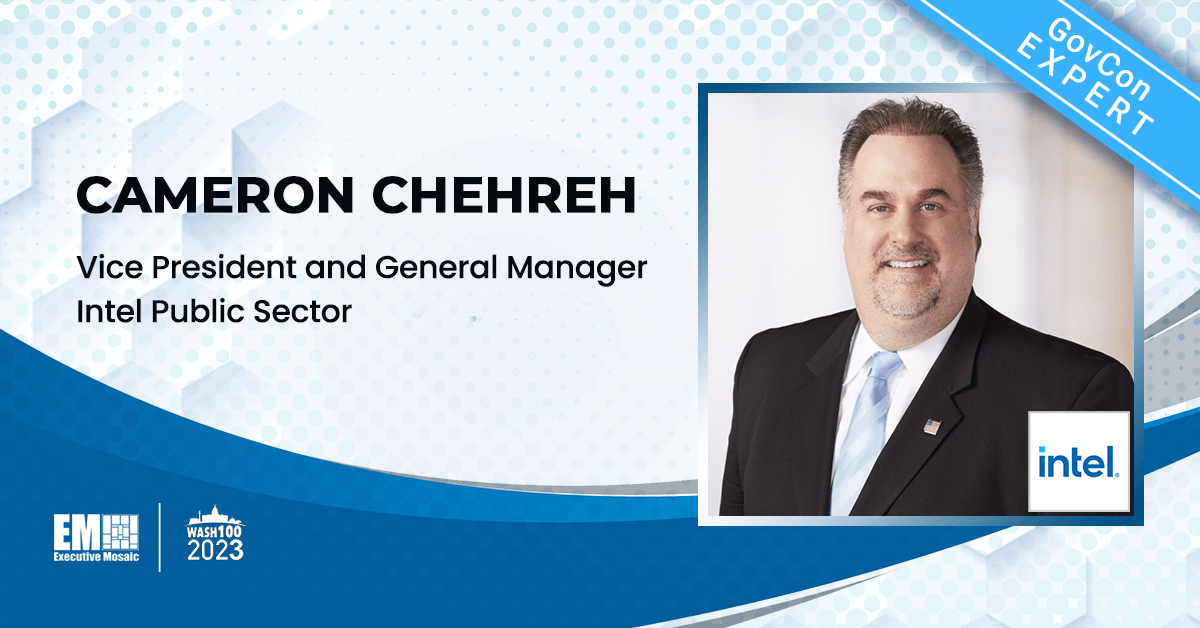By Cameron Chehreh, Vice President and General Manager of Public Sector at Intel and 2023 Wash100 Award winner
Today, 93 percent of Americans are on the Internet. At least 85 percent have a smartphone. More than 300 million have access to 5G service, with 168 million 5G subscriptions forecast by next year. Meanwhile, 85 million connected cars navigate our roadways. Worldwide, 15 billion Internet of Things devices beam in from the edge.
That’s pervasive connectivity. Internet and other network connections are enabling people and organizations to capture and share data, manage work, respond to emergencies, and serve citizens and customers.
Pervasive connectivity is one of five technology superpowers — including ubiquitous compute, cloud-to-edge infrastructure, artificial intelligence, and sensing — that combine to form the digital mission infrastructure that propels government and other organizations.
Pervasive connectivity facilitates an ever-growing range of new capabilities, from WiFi-enabled smart cities to IoT-equipped edge mission environments. It also creates insatiable expectations for more connections and content across new use cases.
Organizations that fail to keep pace could experience a vicious cycle of falling farther behind. Agencies that take steps now to prepare for the next wave of pervasive connectivity will benefit from a virtuous cycle of greater performance, functionality and mission success.
Connectivity grows more prevalent
The past few years have sustained an under-the-radar transformation in network bandwidth, availability and stability. That has raised the baseline for digitization and rich digital experiences.
In particular, WiFi has become ubiquitous, enabling nearly every smartphone. By now, WiFi 6, the IEEE 802.11ax standard, has largely replaced WiFi 5. This latest standard transmits faster, uses less battery power and optimizes connectivity in dense environments such as cities and office complexes.
In fact, WiFi makes the case that Moore’s Law — stated as simply as possible, that digital performance doubles every two years — is more relevant now than ever.
The telecommunications industry, meanwhile, has continued its transition to 5G. The technology can now even enable homes, and more people will get their home internet through 5G instead of cable.
But the next mobile-system standard is already under development. 6G could slash 5G’s one millisecond latency to one microsecond – a 1,000x improvement. That would be revolutionary for Internet 4.0, autonomous vehicles, telemedicine, augmented reality at the edge and more.
6G isn’t expected commercially till 2030. But that’s not so far in the future that organizations shouldn’t be thinking about use cases and about how they’ll align the rest of their technology stack to take advantage.
Processors gain connectivity
Pervasive connectivity will be enabled by the semiconductors that underlie digital mission infrastructure. New multi-chip package processors combine several integrated circuits in a single device. In other words, in addition to compute, you can have communications built directly into the silicon. MCP capabilities deliver up to 10x the size, weight, and power advantage compared to traditional approaches.
Consider the promise of autonomous vehicles and advanced driver assistance systems. The benefits of safety and reliability are possible because of pervasive connectivity and 5G technologies. Just imagine the use cases in a mission environment like a military battle space.
In April, Intel delivered the first MCP prototypes created under the Department of Defense’s State-of-the-Art Heterogeneous Integrated Packaging program. The technology will equip the defense industrial base to diversify its supply chain and protect its intellectual property while driving U.S.-based semiconductor research and development.
The goal of the SHIP program is to enable the DoD to quickly specify, build and implement advanced semiconductors in field equipment. The approach gives Intel, its partner ecosystem, and its customers the opportunity to collaborate on designing chips to meet unique mission needs.
The DoD called delivery of the MCP prototypes a “milestone achievement” in creating pathways to modernization for the DoD. The fact that they were delivered six quarters ahead of schedule bodes well for the speed of future innovations.
Agencies should prepare now for the next wave
To take advantage of those forthcoming innovations, as well as the pervasive connectivity already available, agencies should take three actions now:
1. Embrace flexible work solutions. Post-pandemic, there’s debate about whether organizations should require workers to return to the office. That’s thinking about it the wrong way. The digital workforce isn’t about working from home. It’s about working from anywhere. The U.S. Department of Agriculture inspector on a farm in Nebraska, the Federal Emergency Management Agency responder in a city deluged with floodwater, the warfighter in a field of battle — really, any of the 2.1 million federal civilian employees and 1.4 million active military personnel: All should have the technology to perform effectively wherever they happen to be.
2. Double down on zero trust cybersecurity. Working from anywhere changes the way you think about your security boundary. Agencies need to flip the lens and protect the mission edge first and the centralized enterprise second. Zero trust is an enabler, giving agencies the security and confidence to replace the physical office with a logical workplace.
3. Reimagine the application portfolio. Many organizations still rely on legacy systems that can’t support a digital-workforce front end. Agencies will need to invest in cloud-native applications that enable their working-from-anywhere teams. There’s a lesson here about digital mission infrastructure because it’s the combination of the superpowers (ubiquitous compute, pervasive connectivity and so on) that delivers real value.
Faster connections in more places are delivering new capabilities and ratcheting up expectations for agencies and the constituencies they serve. Organizations that fully understand and embrace the possibilities of pervasive connectivity will be able to extend their missions wherever they need to go.






